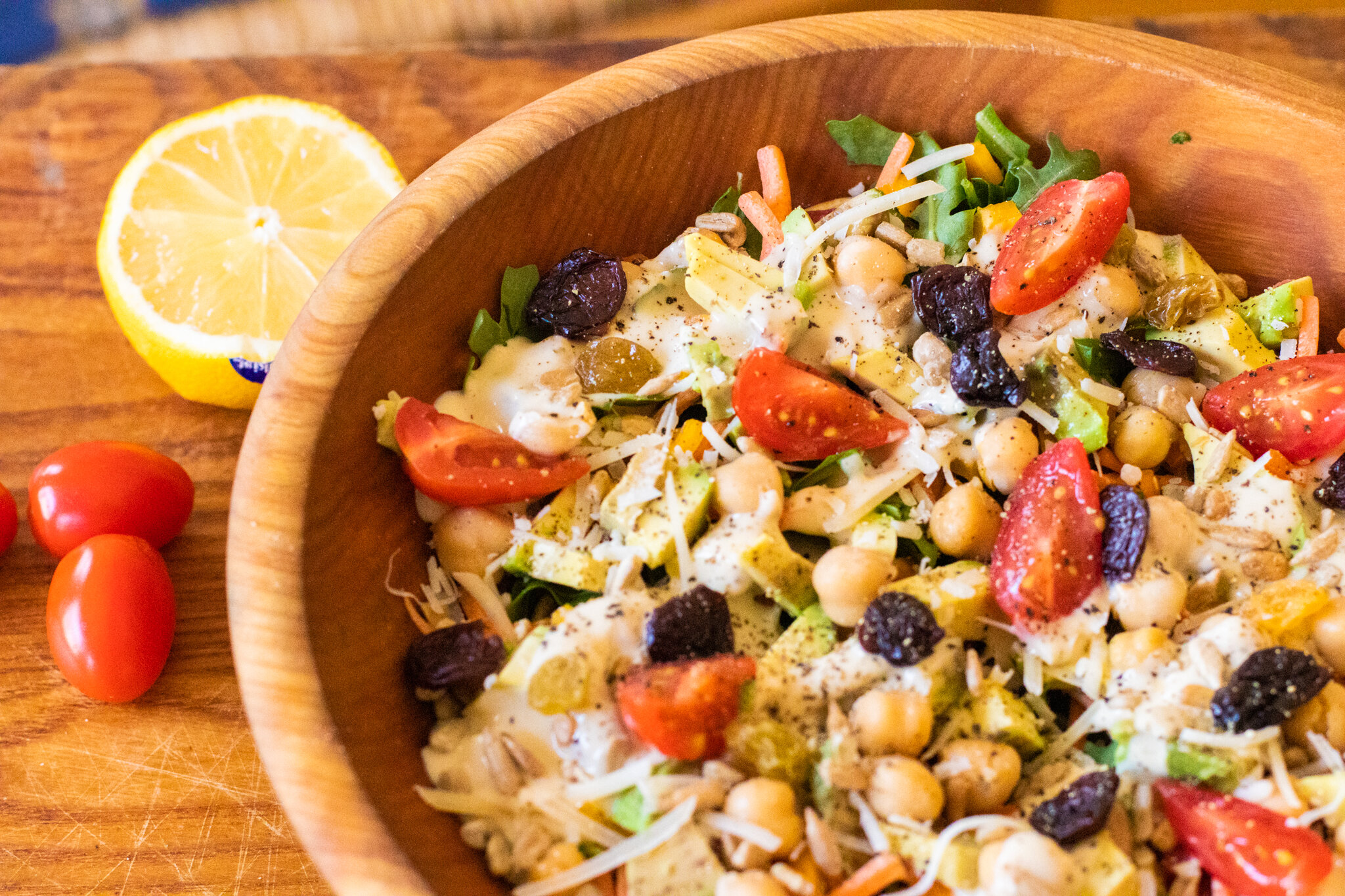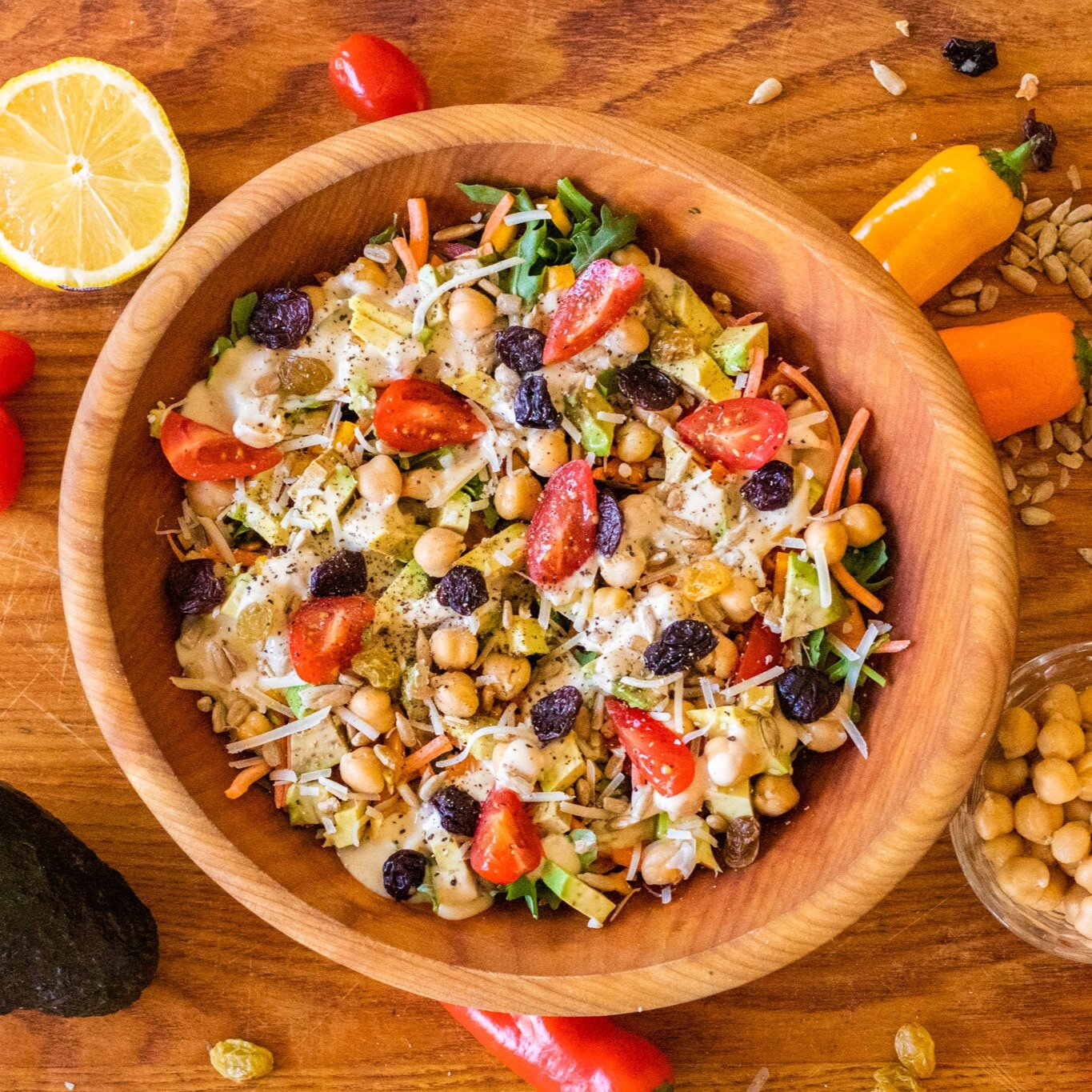A Brief Guide to Better Salads
Salads get a pretty bad rap and it’s time to put an end to that. To many, salads are at best a fresh appetizer or light alternative for the main course, and at worst a bland pile of raw vegetables that simply take up space on the dinner table. Why? I really don’t know, but I think it can be chalked up to precedent. That’s just what we expect from salads. Well, I hereby declare that there is another way. The problem with most salads is that, for some reason, we treat them like a totally different type of food. We pay little-no-mind to the ingredients we toss in, we don’t care to season them, we don’t think about how they’ll taste together or if they’ll fill us up, and then we cover the random melange in a thick dressing and call it a day. I’ll be the first to say that a great dressing can go a long way, but only so far. If we think about salads the way we think about any other food, they have the capacity to be the star of the show, an entire, satisfying, delicious meal in and of themselves.
The first thing we need to remember is that salads are not any one thing. They can be hot, they can be cold, they can be vegetable based, grain based, sweet, spicy, savory, crunchy, creamy, crispy, bright, rich, light or hearty, and this list doesn’t end there. So, when constructing your salad du jour, I think it’s best to keep in mind some guiding components that can help elevate ingredients and bring your salad to the next level. I’ve boiled it down to 9 components, but this is certainly not an exhaustive list. Check out our breakdown below, and keep these things in mind with any salad you make!
The Base
The base or “bed” of salad does not have to be lettuce, it doesn't even have to be greens. The base could be grains (like rice or quinoa), bite-sized roasted vegetables (like carrots or potatoes or brussel sprouts), or chopped raw vegetables (like tomatoes and cucumbers). Your choice here will play a big part in orchestrating the rest of the ingredients. Fresh vegetables may require heavier, more savory ingredients to pair, while grains or roasted vegetables may instead pair best with brighter flavors and crunchier textures. Whatever your choice is, make sure the ingredients are of decent quality, they’ll be the foundation of the whole dish!
Texture
This will be echoed later on, but texture is a key component to a satisfying salad. Including contrasting textures, ideally more than 2, can elevate salads immensely. An example could be taking ingredients with crispiness (with fresh vegetables) and pairing them with creaminess (from a thick dressing or soft cheeses) as well as some crunch (from nuts or seeds). Other textures include mealiness (from things like beans or grains), chewiness (from dried fruits or denser proteins), and tenderness (from soft but firm things like certain cheeses or tofu).
Acid
This is important for virtually any dish, and salad is certainly no exception to the rule. Most dressings are fat-based, so acid will work to cut through those flavors, brighten the dish, and even tenderize the roughness of raw vegetables! If the base of my salad is raw, rough greens like chopped kale, I like to massage my acids into them while prepping the other ingredients to give the acid time to do its work! Acids can include things like citrus, vinegars, and even some acidic brines. Your choice will depend largely on what flavors pair best with the rest of your ingredients.
Oil/Fat
This is a base for most dressings, but the fat in your salad doesn’t necessarily have to be oil! Soft cheeses or even things like a ripe avocado can help give the salad ingredients a bit of cohesion, and can mellow out the collection of bright and acidic ingredients that are likely fighting for attention.
Mealiness/Protein
Protein can be an amazing way to not only boost the nutritional density of salads, but elevate them to something that feels like a complete meal. Beans, tofu, fish, chicken, cheeses, and nuts work great, and add a great weight and texture to an otherwise “unsubstantial” salad.
Crunch
I personally distinguish between crunch and crispiness. To me, the thick stem of romaine lettuce is crispy, while croutons or almonds or pumpkin seeds have crunch. Most salads have no shortness of cripsiness, but throwing in some crunch — whether it's croutons, nuts, seeds, fried onions or even granola — can bring a whole new dimension of texture and complexity to your creations!
Seasoning
Don't forget that salad ingredients need seasoning just like anything else! Adding salt and even some spices or dried herbs can help emphasize the amazing flavors of every ingredient. Seasoning can of course come in the form of dressings as well, but every ingredient should be delicious by itself as a rule of thumb!
Bite-sized
I’ll be honest, this is a personal preference, but a well chopped salad is, in my opinion, better in every way than their more coarsely chopped (or even unchopped) counterparts. Ingredients are able to mix more evenly, bites hold together, salad dressing doesn't fling onto your face as you pull forkfuls from the bowl, the list goes on. Chopping your salad also helps mix your ingredients and coat them in the dressing of your choice before serving!
Sweetness
This is an often overlooked aspect of salad making that I think can really be a difference maker. Like acidity, sweetness can work to balance out the fatty and bitter flavors from some ingredients, and can help accentuate the sweetness of others. Sweetness can come from a huge variety of ingredients: lemon juice, sweet tomatoes, dried fruit, thick glaze dressings, and more!
So, next time your whipping up a salad, keep some of these components in mind and let us know how it goes! Practice makes perfect, and don’t be afraid to experiment!



